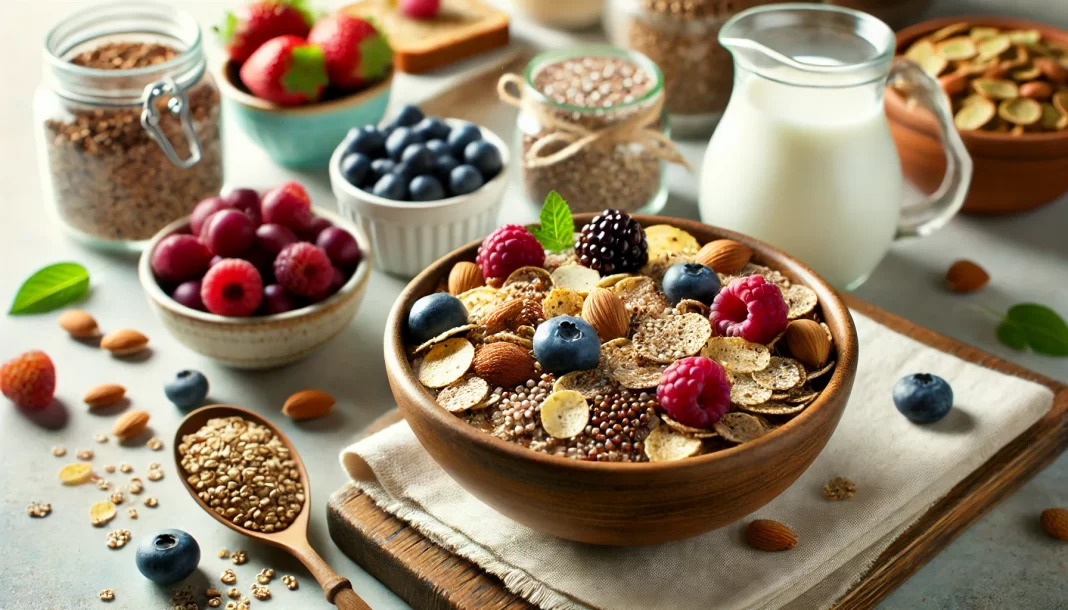If you’ve been wandering the cereal aisle recently, you’ve probably noticed the rise of ancient grains in breakfast cereals. From quinoa to amaranth, these tiny nutritional powerhouses have been sneaking their way into our morning routines—and for a good reason. But why are these ancient grains making such a comeback, and what makes them a superior choice compared to the usual cornflakes and sugar-laden puffs? Let’s dive in and find out why ancient grains in a healthy cereal are not just a passing trend but a wholesome addition to your breakfast game.
What Are Ancient Grains, and Why Should You Care?
Ancient grains are exactly what they sound like: grains that have been cultivated for centuries and remain largely unchanged by modern agricultural practices. Think quinoa, amaranth, farro, and spelt. Unlike their modern counterparts like wheat and corn, ancient grains are nutrient-dense, often gluten-free, and loaded with fiber, protein, vitamins, and minerals. They haven’t been bred for higher yields or ease of processing, meaning you’re getting grains as nature intended—pure, wholesome, and packed with nutrients.
Incorporating these grains into a healthy cereal means you’re not just starting your day with a crunch; you’re fueling your body with a variety of essential nutrients that set you up for success, whether it’s a busy workday, a gym session, or just keeping up with the kids The Wanderer India.
How Do Ancient Grains Compare to Regular Cereals?
Let’s be honest—traditional cereals have a bit of a bad rap. Most of them are packed with sugars, preservatives, and not much else. The labels often promise “fortified with vitamins,” but let’s cut the marketing fluff: those vitamins are often added back in after the natural nutrients have been stripped away during processing.
Ancient grain cereals, on the other hand, are a different story. Here’s a quick comparison to show you why they’re the MVPs of the cereal world:
Nutrient Density: Ancient grains pack a punch when it comes to fiber, protein, and essential minerals like magnesium, iron, and zinc. Unlike refined grains, they’re whole, meaning they retain their bran, germ, and endosperm—where all the nutrients hang out.
Lower Glycemic Index: Many ancient grains have a lower glycemic index compared to refined cereals, meaning they don’t cause a rapid spike in blood sugar. This can help with sustained energy levels and keep those mid-morning munchies at bay.
Naturally Gluten-Free Options: While not all ancient grains are gluten-free, options like quinoa, amaranth, and millet are perfect for those avoiding gluten, offering diverse and delicious alternatives to wheat-based cereals.
Ancient Grains and Heart Health: More Than Just a Trend
One of the most compelling reasons to add ancient grains to your breakfast is their positive impact on heart health. Studies have shown that diets rich in whole grains are linked to lower risks of heart disease, high blood pressure, and stroke. The fiber in these grains helps reduce cholesterol levels, while the presence of antioxidants like polyphenols fights inflammation, which is often at the root of chronic diseases.
Take amaranth, for instance. This grain is not only rich in protein but also contains lysine, an essential amino acid missing in many other grains. It’s been shown to help lower cholesterol levels and improve heart health. Quinoa, another superstar, is a complete protein—meaning it contains all nine essential amino acids—and is loaded with magnesium, which helps relax blood vessels and improve circulation.
A Close Look at the Competitors: Why Ancient Grains Outshine the Rest
We’ve checked out some popular blog posts on ancient grains in cereals, and while they do a good job of highlighting the benefits, they often miss the mark on depth and variety. Here’s how our take goes a step further:
1 Competitor A focuses heavily on quinoa but barely scratches the surface of other grains. Sure, quinoa is great, but why stop there? We’re diving into amaranth, farro, spelt, and more, offering a broader perspective on your cereal choices.
2 Competitor B emphasizes fiber but neglects other essential nutrients. Fiber is fantastic, but it’s not the only reason to choose ancient grains. We’re giving you the full scoop on vitamins, minerals, and the unique health benefits each grain brings to your bowl.
3 Competitor C tends to lean towards the science-heavy side, which can be a bit overwhelming. We keep it simple and relatable, focusing on what you need to know without bogging you down with jargon. Plus, a little humor never hurts when discussing breakfast!
How to Incorporate Ancient Grains into Your Breakfast
Now that you’re sold on ancient grains, you might be wondering how to incorporate them into your breakfast. Luckily, it’s easier than you think. Many brands now offer cereals that combine ancient grains with nuts, seeds, and dried fruit, providing a balanced and tasty start to your day. Look for brands that prioritize whole, minimally processed ingredients—if you can pronounce everything on the label, you’re on the right track!
For a DIY approach, try mixing cooked quinoa or amaranth with your favorite yogurt, berries, and a drizzle of honey. You can even make a warm cereal with cooked farro, cinnamon, and almond milk for a comforting, nutrient-packed breakfast that beats any sugary box on the shelf.
The Bottom Line: Ancient Grains Are Here to Stay
Ancient grains in healthy cereal aren’t just another food fad; they’re a return to nutrition basics—grains that are simple, wholesome, and packed with health benefits. Whether you’re looking to boost your fiber intake, lower your cholesterol, or just start your day with something that doesn’t come with a side of guilt, ancient grain cereals are a fantastic choice. So, next time you’re in the cereal aisle, go ahead and grab that box with quinoa, amaranth, or spelt. Your heart, gut, and taste buds will thank you!



